Gravesite of Carrie Chapman Catt and Mary Garrett Hay
Introduction
Text-to-speech Audio
Carrie Clinton Lane Chapman Catt (1859-1947) and Mary Garrett Hay (1857-1928) were both influential leaders of the women's suffrage movement. Carrie Chapman Catt was president of the National American Woman Suffrage Association and oversaw the victory of passing and ratifying the 19th Amendment. Catt also founded the League of Women Voters. Mary Garrett Hay worked closely with Catt in the work of the NAWSA, but was also a leader in the New York suffrage movement. Hay was president of the New York Equal Suffrage League, president of the New York City Woman Suffrage Party, chair of the League of Women Voters in New York, and chairman of the Republican Women's National Executive Committee.
Images
Monument for Carrie Chapman Catt and Mary Garrett Hay
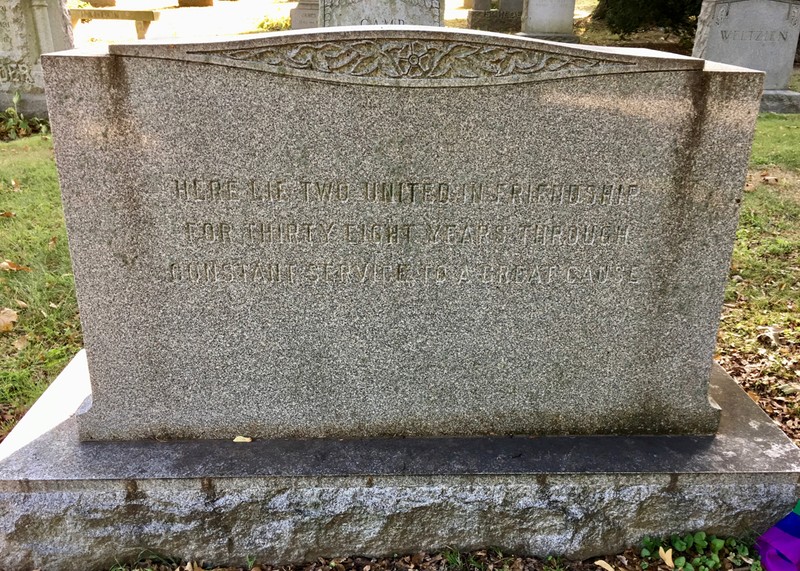
Gravestone of Mary Garrett Hay
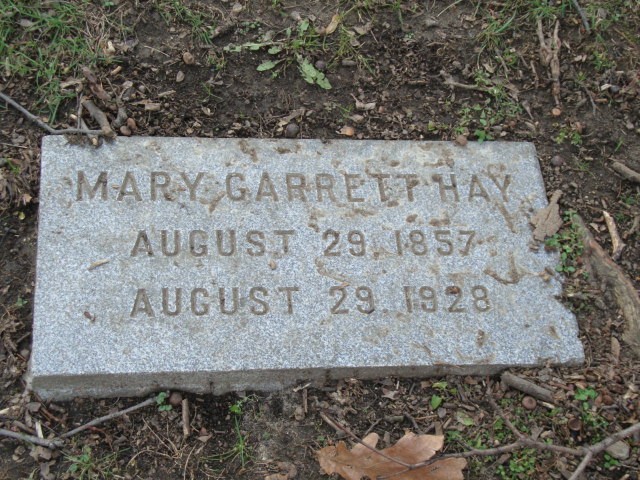
Gravestone of Carrie Chapman Catt
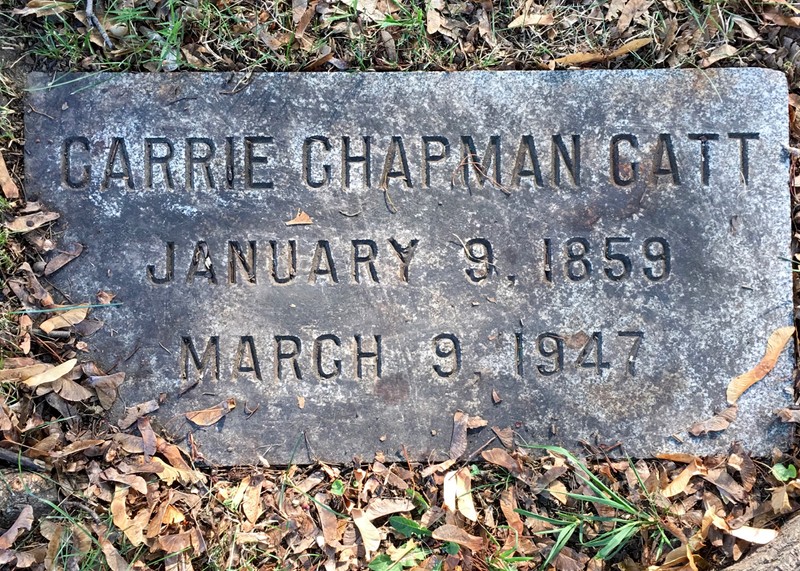
Carrie Chapman Catt and Mary Garrett Hay casting ballots on November 5, 1918 (Library of Congress)
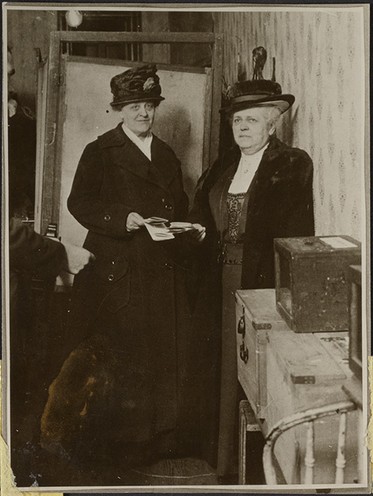
Carrie Chapman Catt and Mary Garrett Hay are at the center of this photo. Catt was arriving back to New York after Tennessee had ratified the 19th Amendment and it had been signed into law on August 26, 1920.
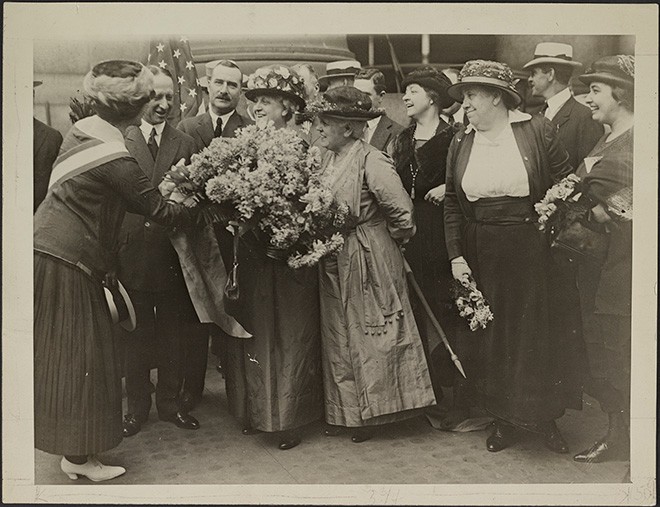
Carrie Lane, c. 1866
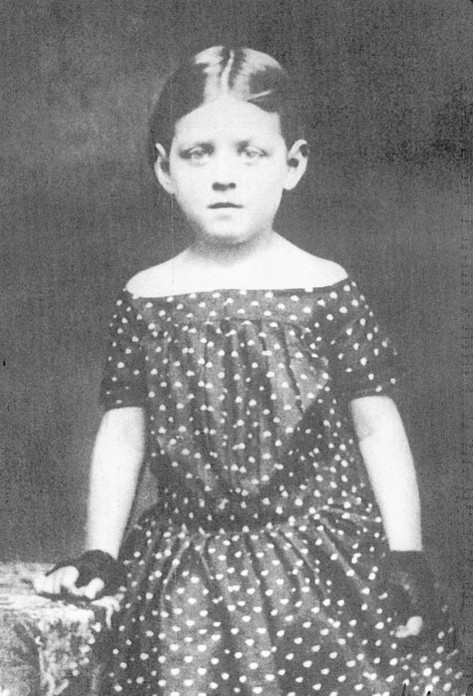
Carrie Chapman Catt, c. 1896
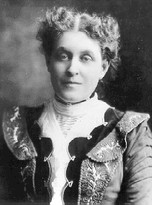
Mary Garrett Hay, c. 1896
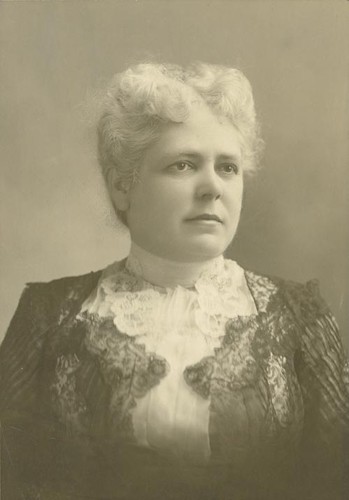
Carrie Chapman Catt, c. 1909
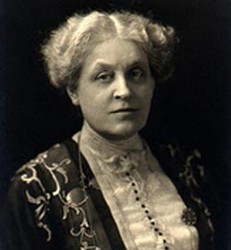
Mary Garrett Hay, c. 1918
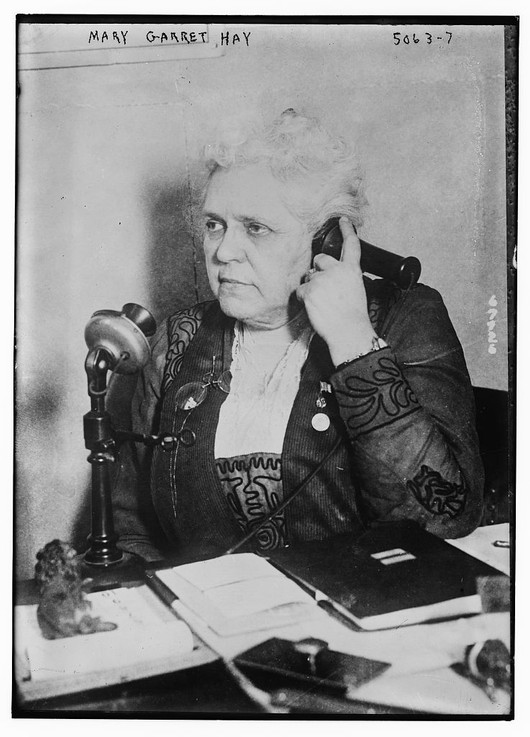
Carrie Chapman Catt (center) leading a suffrage parade, New York City, 1917 (League of Women Voters)
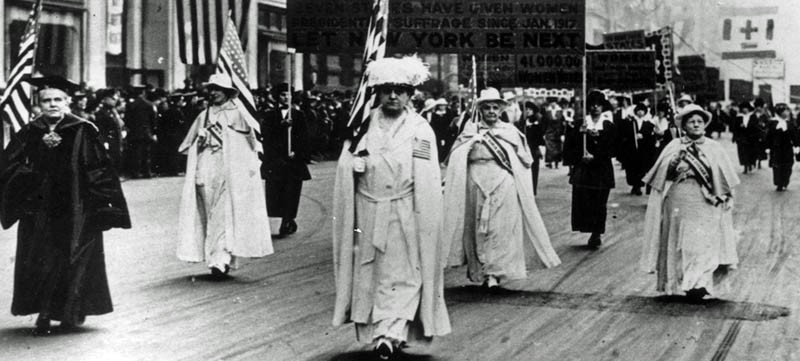
Carrie Chapman Catt (center) rides with Congresswoman Jeannette Rankin (right) in 1917. Rankin was the first woman to serve in Congress. (Library of Congress)
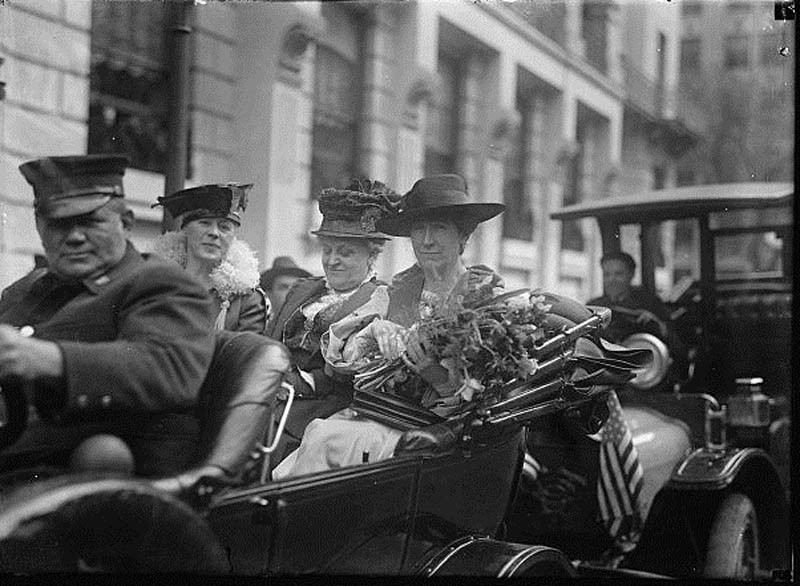
Carrie Chapman Catt after the ratification of the 19th Amendment in 1920 (Getty Images)
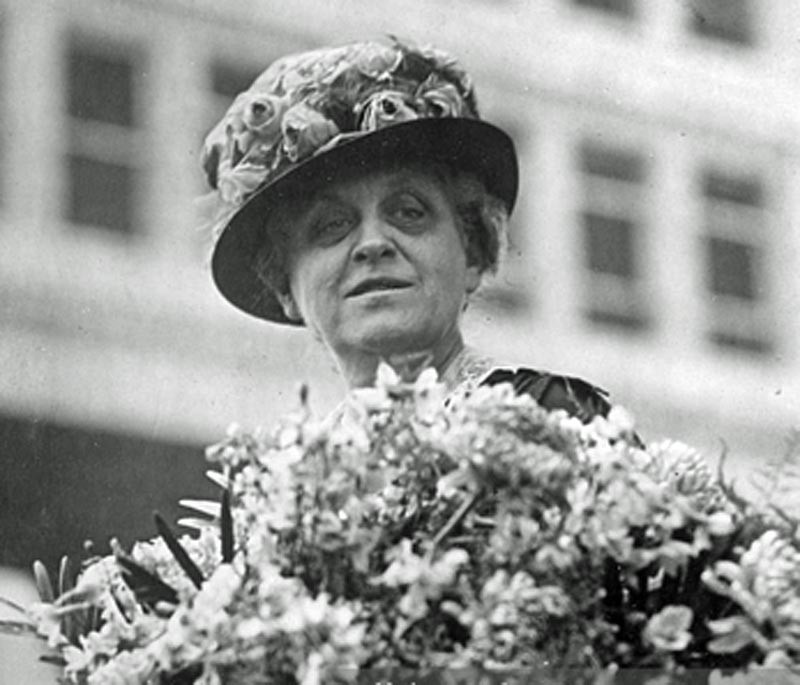
Backstory and Context
Text-to-speech Audio
Suffrage reformers Carrie Chapman Catt and Mary Garrett Hay are buried here together under a monument that states: "Here lie two, united in friendship for 38 years through constant service to a great cause." The two women met through the women’s suffrage movement in the 1890s and became close companions. After the death of Catt’s second husband, they lived together for 23 years. There has been much speculation whether their relationship was simply friendship and companionship, or if it was a romantic and sexual relationship. Catt and Hay were never explicit about the nature of their companionship due to the society at the time, so it is impossible to determine that without some degree of doubt. What is clear is that Catt and Hay were devoted to each other for many years. More importantly Catt and Hay were crucial in the New York state suffrage movement and the national movement that led to the ratification of the 19th Amendment.
Carrie Clinton Lane Chapman Catt (1859-1947)
Carrie Clinton Lane was born on January 9, 1859 in Wisconsin and her family moved to Iowa when she was a girl. She attended Iowa State Agricultural College (now Iowa State University) and graduated with a general science degree as the only woman in the class of 1880. After graduation she worked as a law clerk, school teacher, principal, and superintendent of schools. Carrie Lane married Leo Chapman in February 1885 and the couple moved out to San Francisco, but Leo Chapman died less than a year after their wedding. Carrie Lane Chapman wrote as a freelancer in San Francisco until she returned to Iowa in 1887.
After the death of her first husband and her return to Iowa, Carrie Chapman joined the Iowa Woman Suffrage Association and was the state organizer from 1890 to 1892. In 1890, she remarried to George Catt and began working for women’s suffrage on a national level. Her skills as a writer and speaker brought her to national attention and she started working with the National American Woman Suffrage Association in 1890. She succeeded Susan B. Anthony as NAWSA president in 1900 and in 1902 founded the International Woman Suffrage Alliance (IWSA).
Carrie Chapman Catt stepped down from the NAWSA presidency for a period between 1904-1915 due to her husband’s ill health and subsequent death, and the deaths of several other close family members and friends. During this time she traveled and worked as president of the IWSA. She returned to the United States and took up the NAWSA presidency again in 1915. The women’s movement had become divided between those who were advocating for state voting rights and those who were for more radical approaches such as picketing the White House. Under Catt’s leadership the NAWSA used her “Winning Plan” to work towards both state and federal suffrage rights and accept compromises at the state level if needed. The 19th Amendment was ratified in 1920 and Catt stepped down from the NAWSA presidency again. She founded the League of Women Voters to encourage women to participate in voting and was active in reform until her death.
Carrie Lane Chapman Catt died of heart failure on March 9, 1947 in her New Rochelle, NY home. She donated her entire estate to Iowa State University and the Carrie Chapman Catt Center for Women and Politics was established in 1992.
Mary Garrett Hay (1857-1928)
Mary Garrett Hay was born on August 29, 1857 and spent her childhood in Indiana. Her mother died when she was young so she spent a lot of time with her father who was physician. Mary Hay often traveled with her father to his patient calls and attended political conventions with him (he was a prominent Indiana Republican). She attended school at the Western Female Seminary and was trained as a druggist under her father. From childhood she was interested in politics and as a young woman she first became involved in the temperance movement and then joined the women’s rights movement. She spent some time organizing local suffrage groups and through her involvement with the movement met Carrie Chapman Catt. In 1895 Hay moved to New York City and briefly lived with Catt that year. She helped Catt set up the offices of the National American Woman Suffrage Association in New York, served as the organization’s railroad secretary, and was instrumental in organizing many of the national conventions.
Mary Hay continued to work for the NASWA but also was a leader in the New York movement. She was the president of the New York State Federation of Women’s Clubs 1910 to 1912, president of the New York Equal Suffrage League 1910 to 1918, president of the New York City Woman Suffrage Party 1912-1918, and was chair of the League of Women Voters in New York City 1918 to 1923. Like her father, Hay was a staunch Republican and her involvement in the Republican Party helped support the suffrage work she and Catt were doing. She was chairman of the Republican Women’s National Executive Committee 1919 to 1920. Through her positions in the New York suffrage movement, Mary Hay helped win the right to vote for New York women in 1917.
After Carrie Chapman Catt’s second husband died in 1904, Hay moved in with her and the two women lived together for the rest Hay’s life. Together the two women worked tirelessly for women’s suffrage and other reform causes. Mary Hay died suddenly in 1928 on her 71st birthday. Catt found her unresponsive in her bedroom from a possible cerebral hemorrhage and Hay died about twelve hours later.
Sources
“A Biography: About Carrie Lane Chapman Catt.” Carrie Lane Chapman Catt Girlhood Home. Accessed July 5, 2021. https://www.catt.org/biography.html.
Beam, Amanda Hillard. “BEAM: A lost daughter: How Charlestown’s Mary Garrett Hay changed the world.” News and Tribune. September 1, 2015. Accessed July 5, 2021. https://www.newsandtribune.com/opinion/beam-a-lost-daughter-how-charlestown-s-mary-garrett-hay-changed-the-world/article_a1c643c4-5030-11e5-bdce-5f029571c1cb.html.
“Carrie Chapman Catt (1859-1947).” Carrie Chapman Catt Center for Women and Politics. Iowa State University. Accessed July 5, 2021. https://cattcenter.iastate.edu/home/about-us/carrie-chapman-catt/.
“Mary Garrett Hay, Organizer of Women’s Associations.” Herald and Review. Decatur, IL, June 28, 1903. Page 7. Newspapers.com. Accessed July 5, 2021. https://www.newspapers.com/clip/9262061/herald-and-review/.
“Mary Garrett Hay scrapbook, 1895-1928.” The New York Public Library Archives & Manuscripts. Accessed July 5, 2021. http://archives.nypl.org/mss/1363.
Michals, “Carrie Chapman Catt (1859-1947).” National Women’s History Museum. Accessed July 5, 2021. https://www.womenshistory.org/education-resources/biographies/carrie-chapman-catt.
“Papers of Mary Garrett Hay in the Woman’s Rights Collection, 1918-1923.” Schlesinger Library, Radcliff Institute. Harvard University. Accessed July 5, 2021. https://hollisarchives.lib.harvard.edu/repositories/8/resources/8323.
Van Voris, Jacqueline. Carrie Chapman Catt: A Public Life. New York: The Feminist Press at The City University of New York, 1987. Google Books Preview. Accessed July 5, 2021. https://books.google.com/books?id=s2SkL2HNuwEC&vq=%22woman+suffrage+party%22&source=gbs_navlinks_s.
"Carrie Chapman Catt." Find A Grave. Accessed July 5, 2021. https://www.findagrave.com/memorial/184/carrie-chapman-catt.
"Mary Garrett Hay." Find A Grave. Accessed July 6, 2021. https://www.findagrave.com/memorial/32329231/mary-garrett-hay.
"Carrie Chapman Catt." Find A Grave. Accessed July 6, 2021. https://www.findagrave.com/memorial/184/carrie-chapman-catt.
"In the Spotlight on Election Day." Shall Not Be Denied. Library of Congress. Accessed July 5, 2021. https://www.loc.gov/exhibitions/women-fight-for-the-vote/about-this-exhibition/hear-us-roar-victory-1918-and-beyond/house-and-senate-passage-leads-an-exhausting-ratification-campaign/in-the-spotlight-on-election-day/.
"A Hero's Homecoming in New York." Shall Not Be Denied. Library of Congress. Accessed July 6, 2021. https://www.loc.gov/exhibitions/women-fight-for-the-vote/about-this-exhibition/hear-us-roar-victory-1918-and-beyond/ratification-and-beyond/heros-homecoming-in-new-york/.
“Carrie Chapman Catt (1859-1947).” Carrie Chapman Catt Center for Women and Politics. Iowa State University. Accessed July 5, 2021. https://cattcenter.iastate.edu/home/about-us/carrie-chapman-catt/.
“Carrie Chapman Catt (1859-1947).” Carrie Chapman Catt Center for Women and Politics. Iowa State University. Accessed July 5, 2021. https://cattcenter.iastate.edu/home/about-us/carrie-chapman-catt/.
"Mary Garrett Hay." Wikipedia. Accessed July 5, 2021. https://en.wikipedia.org/wiki/Mary_Garrett_Hay.
“A Biography: About Carrie Lane Chapman Catt.” Carrie Lane Chapman Catt Girlhood Home. Accessed July 5, 2021. https://www.catt.org/biography.html.
"Mary Garrett Hay." Wikipedia. Accessed July 5, 2021. https://en.wikipedia.org/wiki/Mary_Garrett_Hay.
"Notable Women of the Suffrage Movement: Carrie Chapman Catt." The Frick Pittsburgh. Accessed July 6, 2021. https://www.thefrickpittsburgh.org/Story-Notable-Women-of-the-Suffrage-Movement-Carrie-Chapman-Catt.
"Notable Women of the Suffrage Movement: Carrie Chapman Catt." The Frick Pittsburgh. Accessed July 6, 2021. https://www.thefrickpittsburgh.org/Story-Notable-Women-of-the-Suffrage-Movement-Carrie-Chapman-Catt.
"Notable Women of the Suffrage Movement: Carrie Chapman Catt." The Frick Pittsburgh. Accessed July 6, 2021. https://www.thefrickpittsburgh.org/Story-Notable-Women-of-the-Suffrage-Movement-Carrie-Chapman-Catt.
